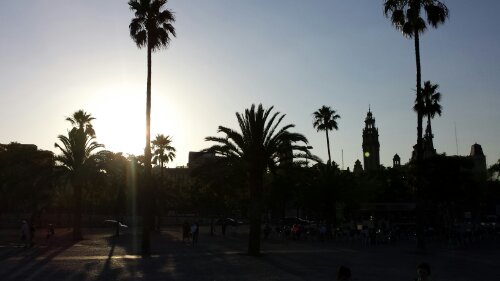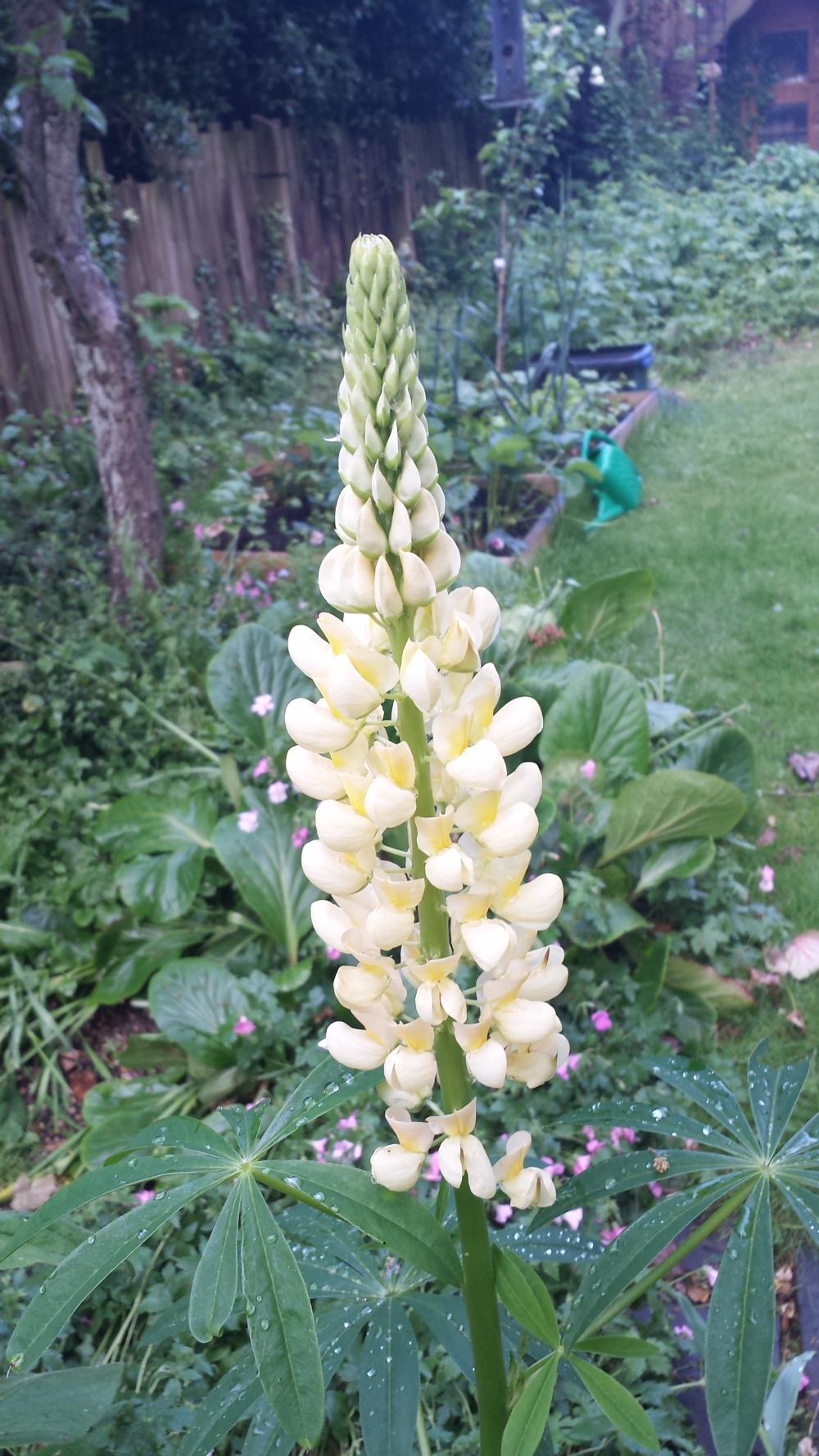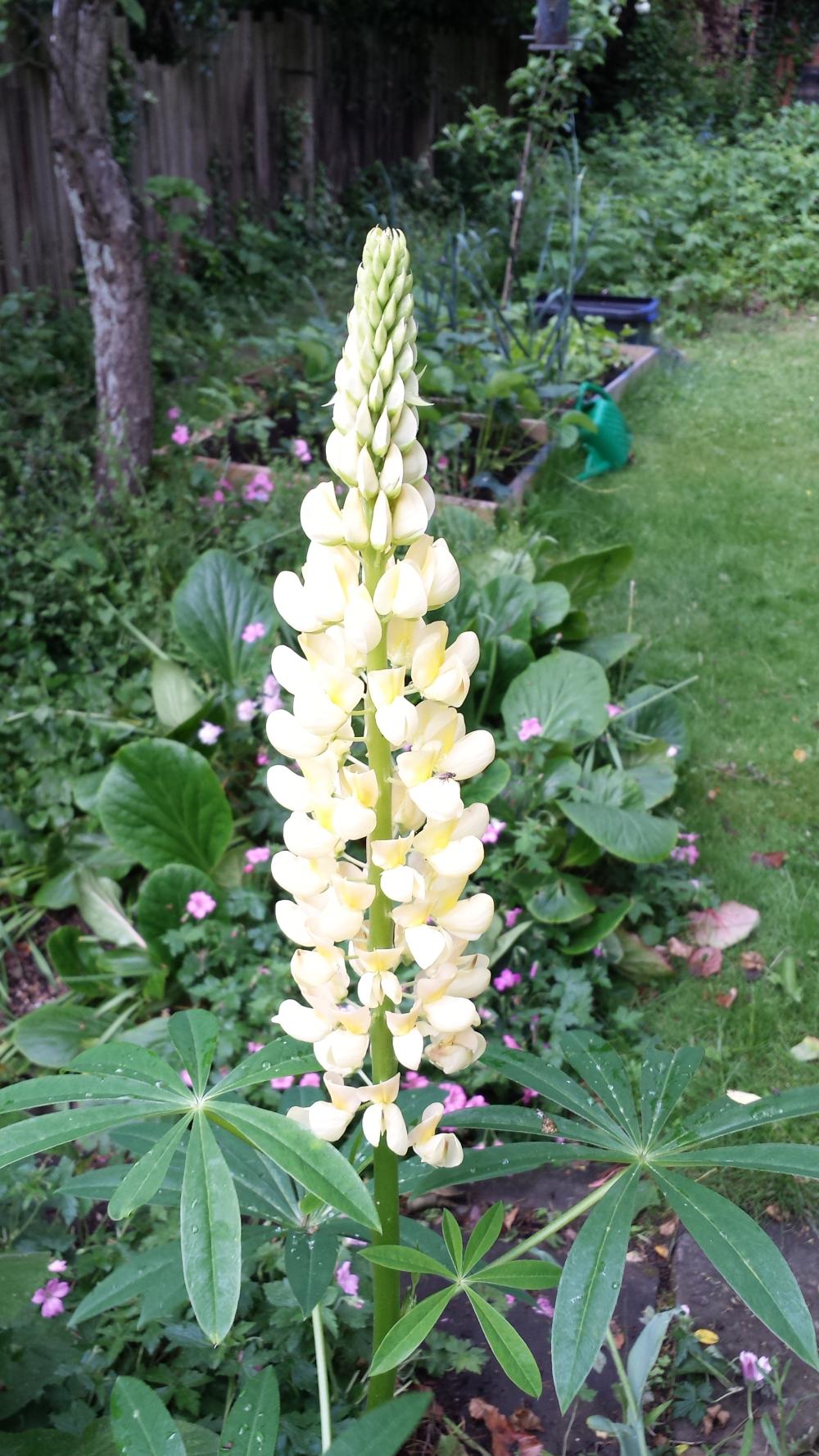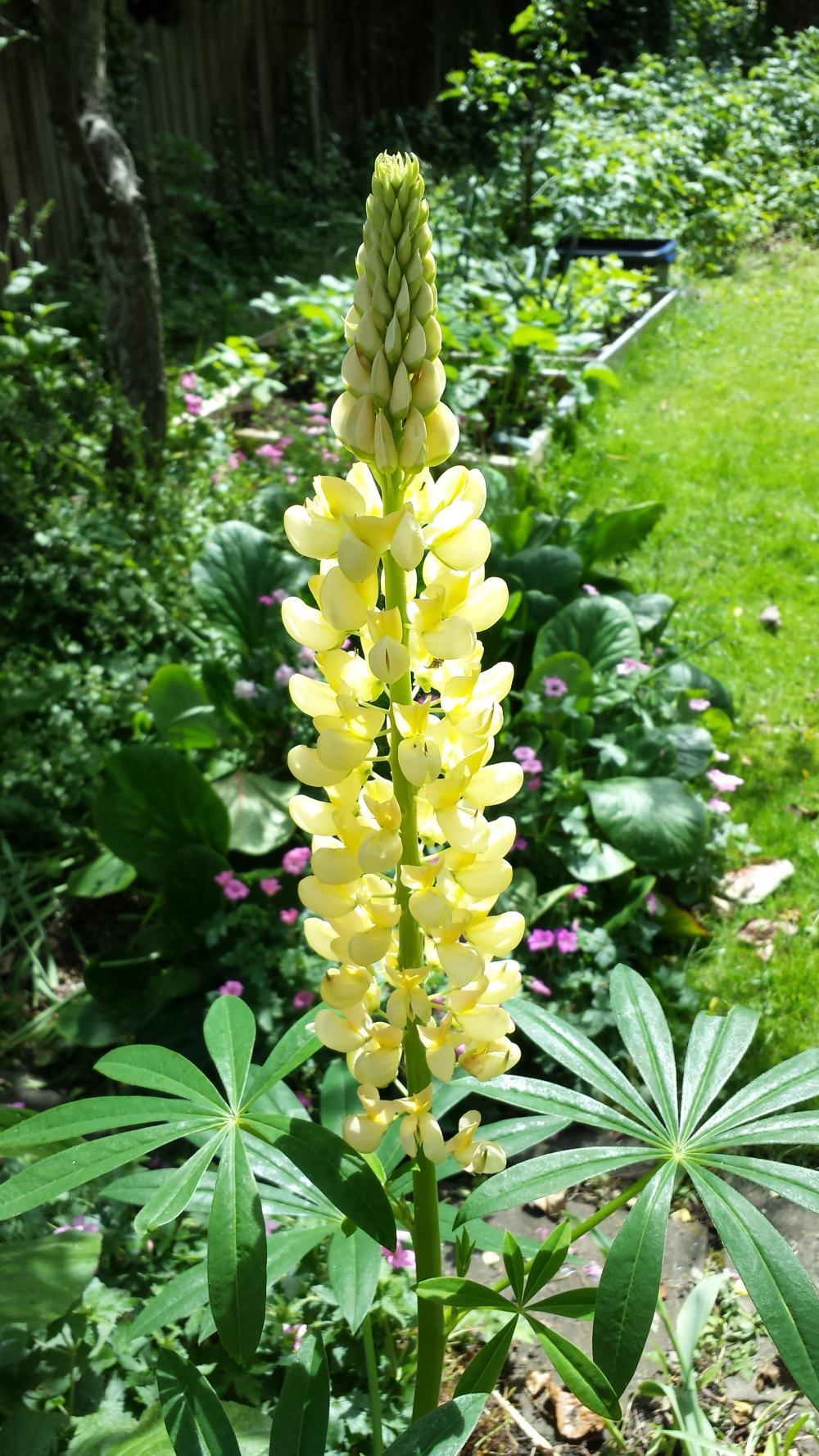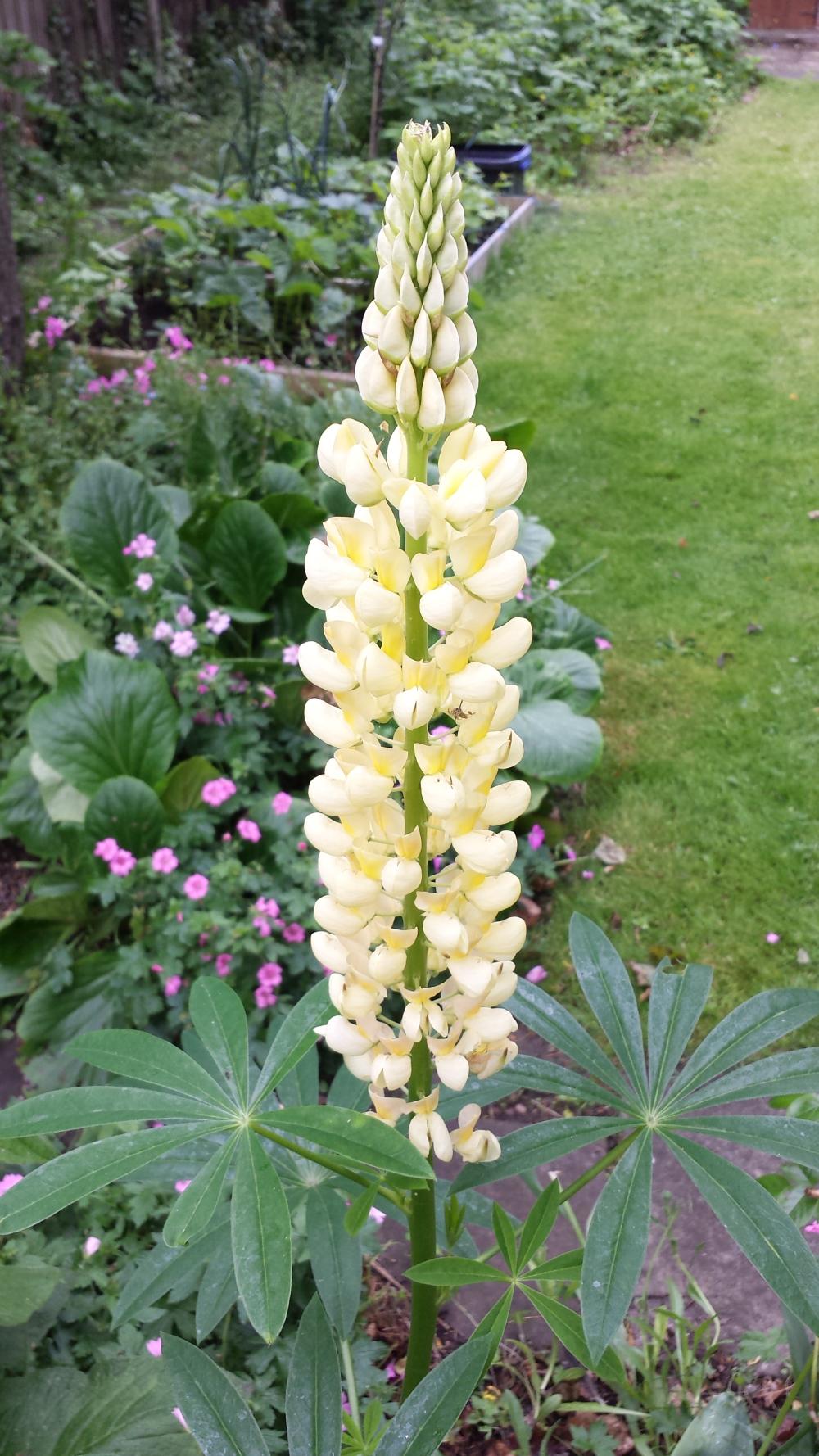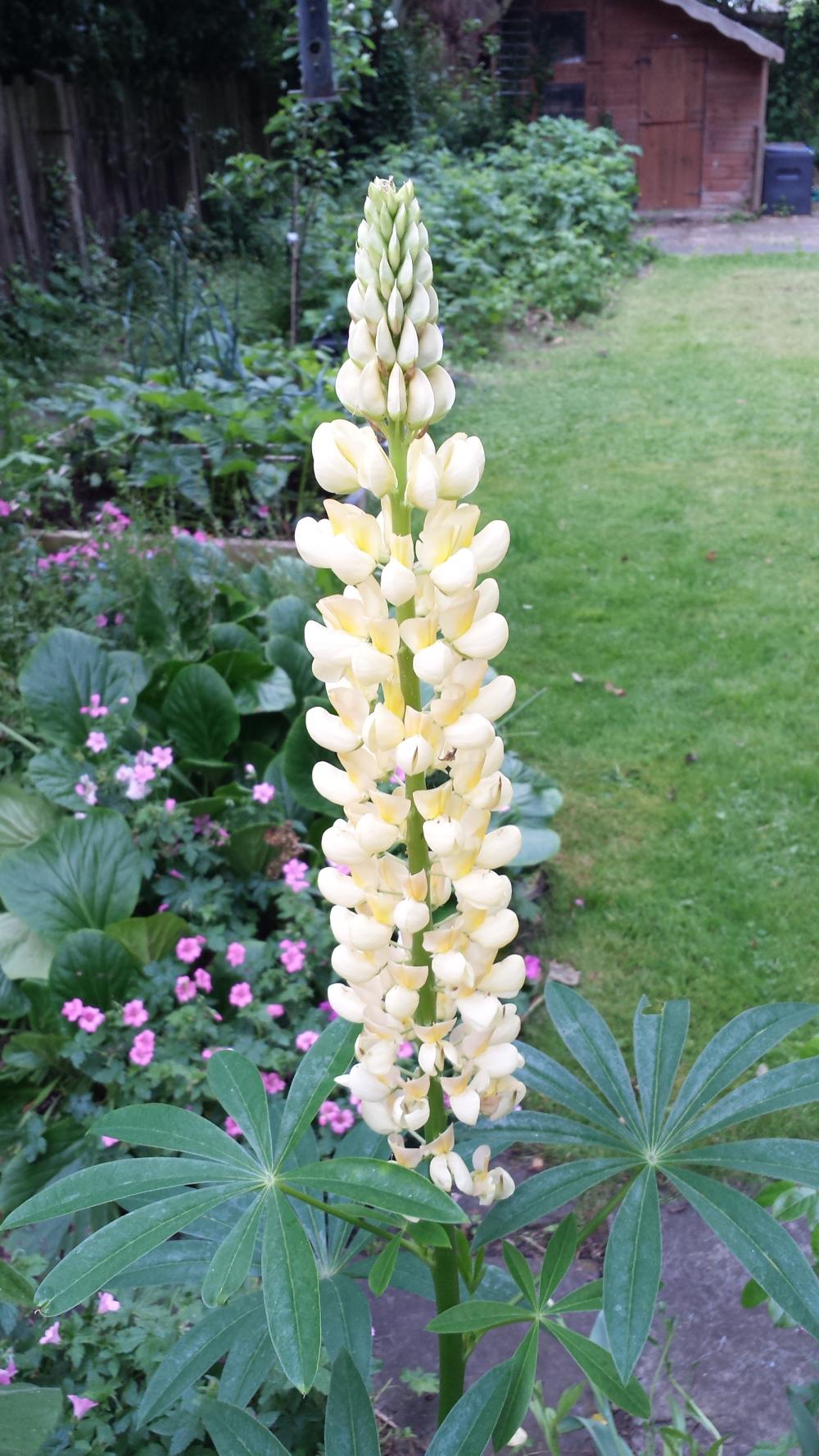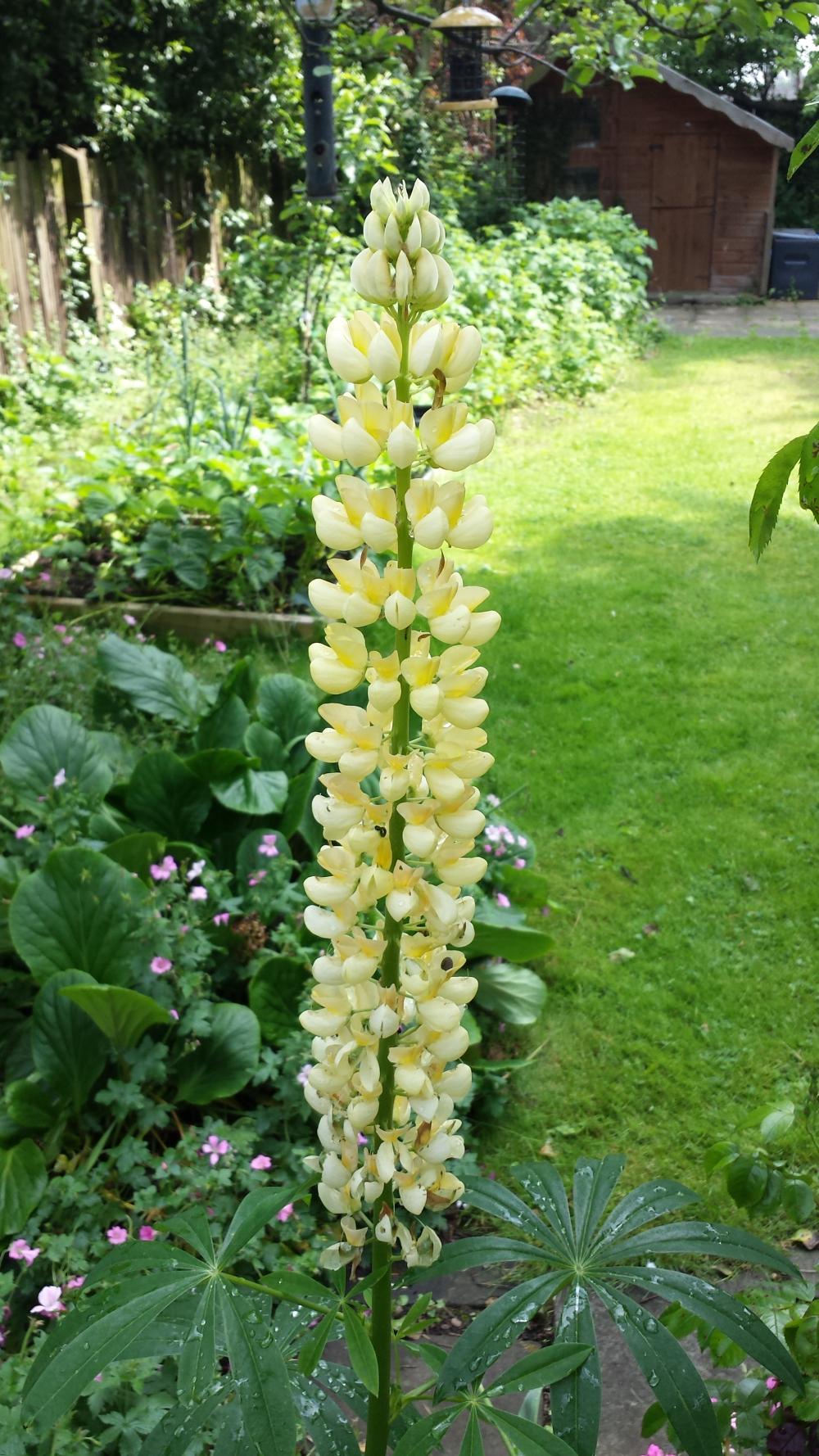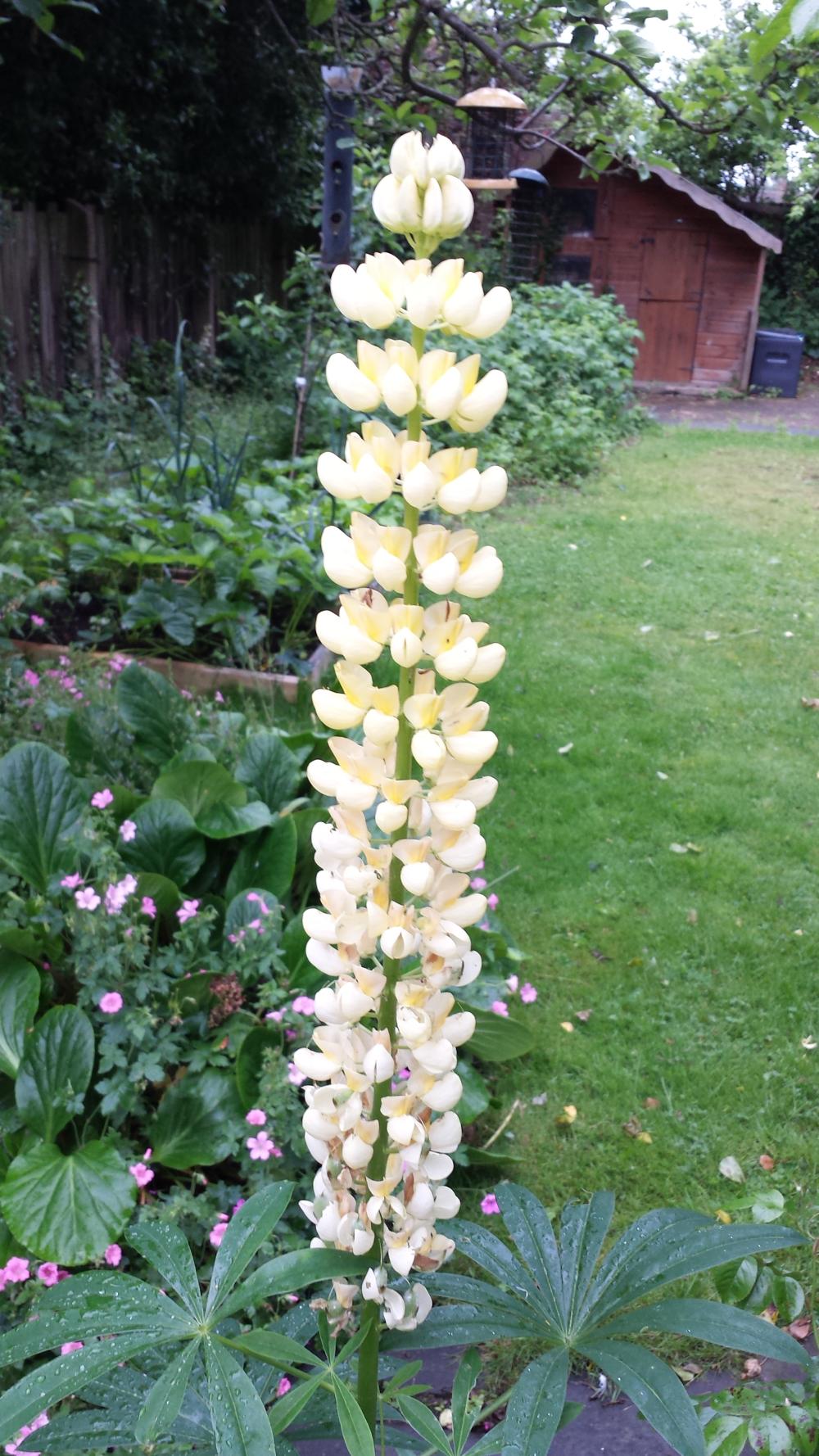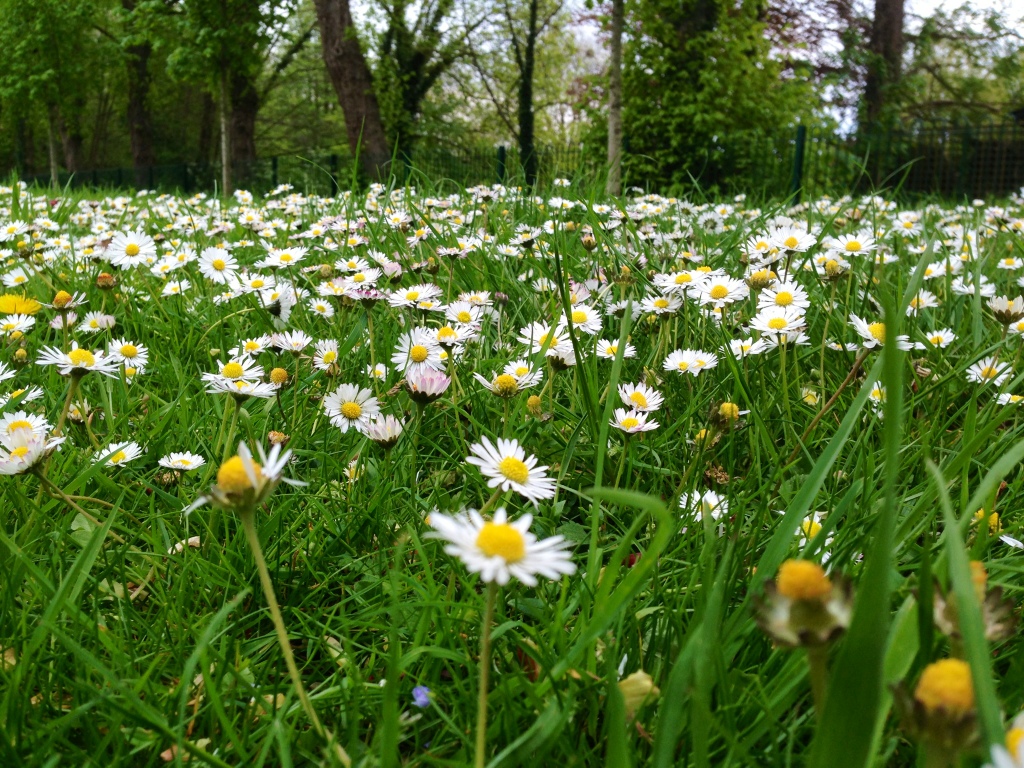More oasis in the Arabian desert than western city but the culture is there, along with the hordes of tourists.
The lifestyle takes getting used to. Dinner late into the evening, forced inactivity under the afternoon sun, leisurely breakfast at your pleasure. The book gets read.
June 26, 2013
June 23, 2013
June 17, 2013
The Ceiling at Temple Church.
I went to London recently, as a tourist, and visited Temple Church.
I loved the ceiling in the nave so I made this image.
June 9, 2013
Mr Blue Sky
I had to upload this photo as a contrast with the shot from the summit of Snowdon last weekend. It was, as may be seen, taken in London under clear blue skies. It is a fairly rare sight in the UK. It wouldn’t have been possible last year, partly because it was taken with a Samsung Galaxy S4 which has the capability of using the forward and rear facing cameras simultaneously. I only got that phone a couple of weeks ago. I normally reserve this type of comment for trefor.net.
Philosopherontap is all about where art collides. trefor.net is about fusion of tech. Well now you are seeing art colliding with technology.
May 22, 2013
May 18, 2013
A Pokemon in the wild…
Back in July 2007 I went on holidays to Japan. Highly recommended by the way.
Walking around Tokyo I spotted this chap, stood patiently waiting for someone.
What got me about him was the fact that despite being quite obviously dressed as a Pokemon, no-one was really even fazed by it.
Nevertheless, It made for an interesting photograph.
May 1, 2013
Art and the boy from The North
Hello, my name’s Rob Wilmot. Over several brandies, Tref persuaded me to take on the role of Art Correspondent on his blog, Philosopherontap. He and I are a bit alike, as we’ve both made our careers as technologists whilst at the same time allowing our artistic souls to surface occasionally.
So here I am. I thought long and hard about what to write as my first post, and I’ve settled for introducing myself via my artistic journey. A bit pretentious maybe… but authentic I hope.
When I was young I used to love the paintings of Constable – I vividly remember being transfixed by the ‘big canvases’ at the National Gallery. My outlook on life was pit village, working class narrow. There was no World Wide Web and I liked what my art teacher said I should pursue, which was the art of the traditional realist persuasion.
At the age of eighteen I focused my Art ‘A’ Level thesis on the work of John Constable. I recently dug it out to jog my memories for this post. It’s so naïve and sweet, but it does have some ‘gems’ in it which still ring true for me. With my limited resources – a local library (there was still no WWW) – I discovered other works by artists like Claude Lorrain, prominent three centuries prior to Constable, and was delighted to recognise the similarities in their perspective and composition. Both were literal landscape painters, though where Lorrain fixed mythical figures in his vistas, Constable added the exquisite normality of the child and the dog playing in the river. I learned the lesson that the new often borrowed from the old. It was through my exploration of Constable that I discovered Jean-Baptiste-Camille Corot and it was the intensity of his depiction of light and shadow that transfixed me. One of my favourite paintings of all time is Corot’s painting ‘The Cabassud House, Ville D’Avray’. Oddly, I can’t find it online but here’s a link to a similar painting of the same subject. For me this places the artist at the intersection between literal landscape and impressionism – a line almost, but not quite, crossed by Constable in his later paintings. Corot and Constable never met, but they both visited and painted scenes of the Forest of Fontainebleau.
In my early twenties I discovered the possibilities of multimedia. By serendipity rather than good judgement I landed on a course at the University of Bradford grandly entitled ‘Electronic Imaging and Media Communications’. This course was ‘new age’ – a science degree, but with a cohort selected from both arty and scientific candidates. It presented a melting pot of ideas and it was here that I discovered the work of Bill Viola on a field trip to an exhibition at the Albert Docks in Liverpool. His Audio Visual installations struck a deep chord with me: the perfect convergence of poetry, art and technology on a majestic scale. It was after this discovery that I created my first ‘real’ work of art – an interactive graphic novel based on a story I wrote about a scientist who digitally encodes his DNA and his consciousness. Having beamed these into space, they are picked up 26 years later by aliens who recreate the scientist from the digital patterns and return the doppelgänger to earth 54 years later.
It can’t have been complete tosh as it seemed to catch the Zeitgeist of the coming of the home computer age, winning the IBM’s International Leonardo da Vinci Awards for multimedia. A proud moment for me: not because I won but because I got to meet Terry Pratchett, an up and coming author at the time. He was one of the judges and he made a special point of approaching me over drinks and nibbles to divulge that he’d voted for me because my work was ‘disruptive’. Well that’s been me ever since 🙂
I bypassed the likes of Tracey Emin and Damien Hirst. I still to this day believe that their patron, Charles Saatchi, was the real artist persuading us that the ‘work’ of these conceptual artists was indeed worthy of being called art: The epitome of the emperor’s new clothes woven by the consummate brand man.
And then I discovered the World Wide Web… well it discovered me really, but that’s another story.
I began an online exploration and found the works of David Hockney, Lucian Freud, Marc Chagall, and Francis Bacon. I’ve been fortunate in that the second half of my life (so far) has taken me around the world and I’ve been able to stand inches from some of the great works of the artists I admire. I love to analyse brush strokes, to see paint in relief: the circle created by the impression of the baked bean can, and the fingerprints of the artist abandoning the brush for the freedom of skin on canvas.
My unplanned career in technology and business has more often than not steered me away from creating my own art. But in 1996 both worlds intersected when I had a chance epiphany at the International Petroleum Exchange (IPE). I was building a web based stock trading news and prices system for a client at the time and needed some pictures for the homepage. I wanted to capture the intensity and passion of the trading floor and the IPE was one of the last places in the UK that still used the ‘open outcry’ method of trading. Open outcry is the trading you’ve seem in films and TV where representatives of firms dress in distinctive, brightly-coloured, jackets and scream and shout at each other, waving their hands with frantic gestures to indicate the option to buy or sell. I spent a day there taking pictures but, as there were no digital cameras that could capture action based stills back then, we shot on standard film. Luckily I had a professional photographer who could get the right exposure for the lighting conditions of the vast trading floor, but I also took pictures with my bog standard Olympus Mju compact camera. After getting the snaps back from Boots, I found that many of the pictures had motion blur. One of the designers on my web team at the time commented that they we’re reminiscent of some of Francis Bacon’s work. Something in this caught my imagination and I rented a studio in Harrogate and got to work. Two months later I had created a series of large format triptychs using acrylic and oil paints on canvases that I had stretched with my own hands. An exhibition entitled “Oil on Canvas” (get it?) was staged in what was a bit of a blur, and to my amazement, everything sold (except two triptychs that I held back because I had fallen in love with them).
Several years later, I got and email out of the blue from the Chief Executive of the IPE. He was moving jobs and had not stopped thinking of my paintings since viewing them years before. After a private showing in London Docklands he persuaded me to part with one of my remaining triptychs. His name is Dr Richard Ward and he moved on to the role of Chief Executive, Lloyds of London. For many years my (now his) pictures hung in pride of place on the wall of his office at the top of the Lloyds building. They now hang in the study of his London home, apparently because he loves them so much. Other people have their work on their walls, but Richard is the only one who has made a point of telling me he would never part with them.
So there you have it, a potted history of me and the art that has helped shape the way I think and work. I continue to paint and take photos. Two of my children, Sam and Tom, will soon graduate from university as hard scientists: zoology and forensics respectively, though the artistic gene seems to have asserted dominance in my daughter, Grace. We sometimes paint together – though not nearly enough.
I’ll be posting reasonably frequently from now on …well that’s the plan anyway.
In the meantime, you can also follow my tweets @robwilmot and learn more about me on LinkedIn
And finally, as a way for me to get to know you, why don’t you use the comments area below to tell me about your favourite artist and how they have inspired you?
April 28, 2013
Train at the High Street level crossing in Lincoln pulling in to Central Station
Train at the High Street level crossing in Lincoln pulling in to Central Station. One day they will build a tunnel and we will no longer see the level crossing in action. When that day comes the passing of the level crossing, if I can put it like that, will not be lamented. The barriers seem to be down more than they are up which causes congestion, both automotive and pedestrian.
The train is an East Midlands Trains operated service, comprises of two coaches and is typical of the type that runs as a commuter service between Lincolnshire and Nottinghamshire.
A simple chink in the curtain of the life of Lincoln in 2013.
The perfect bacon sandwich
bacon sandwich – food of the gods
Food seems to be a theme of the moment. This time we are featuring the humble bacon sandwich. I say humble but really the bacon sandwich is royalty in the culinary world on a par with the finest dishes served by the best chefs in their Michelin starred palaces.
There are many ways of serving the bacon sandwich. Individuals will have their own views as to the best way and who is to say they aren’t all right. This is a highly subjective matter.
In the analysis that follows the various variables for each aspect of the making of a bacon sandwich are discussed and my own preferred recipe is offered as a benchmark. Rank others in comparison, better or worse, as you see fit.
The bacon
The choice of bacon is of fundamental importance. In the first instance any bacon that comes in a package labelled BOGOF should be avoided at all cost. This will be cheap water filled rubbish. The slices will be so thin you will be able to see through them and when cooking the bacon will emit a yukky white substance that apparently is part of the preservative injected into the meat during processing. The water will steam the bacon and you will find it very difficult to get the right “finish”.
Reality is it is difficult to find any bacon that doesn’t have the white stuff in it. Experimentation will allow you to identify the brand that suits you best. Look for the words “dry cure” and “thick cut”. Your are most likely to find the best bacon at a real butchers and not in a supermarket. You have been warned.
There is a valid debate on whether to use back bacon or streaky. Streaky is undoubtedly more flavoursome due to its having more fat but back does tend to provide a meatier filling. The American habit of over-frying streaky is usually to be avoided and American bacon tends to be too salty.
The bread
The best bread to use for a bacon sandwich is undoubtedly crusty white unsliced. You can use pre-sliced crusty white but the uniformity of the slice doesn’t quite feel right. Self-slicing produces a variation in cut that suits the rustic nature of this sandwich and makes for a different culinary experience at each meal1.
The mass produced sliced white bread that comes with brand names advertised on television is not appropriate for a bacon sandwich unless you are a guest at someone’s house and your host is providing the breakfast. One assumes in this instance that a considerable amount of beer was downed the night before and you are pretty grateful for anything that staves off the after-effects of the evening.
Under no circumstances should brown bread be used and if rolls are the only option the posher they are the better.
The debate over toasting has raged long and hard. Toasting the bread for your bacon sandwich is perfectly acceptable though it is a shame to do this if the bread is really fresh. Toasting crusty white bread more than two days old is the preferred method for this age of bread.
The bread/toast should be buttered. Margarine doesn’t cut it. Some people are known to prefer no butter. Whilst this is acceptable it should be understood that a bacon sandwich made without butter is never going to reach perfection.
Grilling versus frying
This is a bit of a no brainer really. Frying always produces the best flavour in a bacon sandwich. Grilling shrinks the meat more. Lard is the best option for oil although it is recognised that the use of lard is controversial to the point of unacceptability in the modern health conscious society. Cooking oil is an acceptable alternative and need not be applied in large quantities. The fats from the meat will soon seep into the pan and provide the ideal base for frying. If cheapo bacon is being used then grilling will at least allow the water and white rubbish to drip off but you should take care to at least double the number of slices you were planning to use per person.
A minimum of two slices of bacon should normally be used but three or more are acceptable. Ideally the bacon once fried will have some crispy fat bits and some darker brown areas on the meat itself.
Unlike sausages which benefit from slow cooking, for best effect bacon should be cooked on a highish heat. We are looking for the right combination of softness and crispness and a slow cook will tend to err towards the soft side.
Seasoning
By seasoning I mean red sauce/brown sauce/no sauce. This is entirely a personal choice. The purist will almost certainly opt for “naked” but I am a brown sauce man. HP only. You can tell the difference. Tomato ketchup should be reserved for burgers and hot dogs.
Variety
It is perfectly respectable to experiment with different varieties to accompany the basic bacon filling. Mushrooms (fried) tomatoes (fried or uncooked – as you like) or even lettuce and tomato for the classic BLT are fine with added mayo. Bacon and lettuce without the tomato is a bit weird and should probably be avoided. Other filling combinations may be possible but are straying well away from the pure form. For example bacon and egg sandwiches should better be described as a “breakfast sandwich”.
Vegetarian bacon sandwiches
Nah!
Other bacon sandwich stories
In my experience the bacon sandwich is the one meat dish that is likely to convert vegetarians back to being carnivores (or omnivores/woteva) and I often use this as an icebreaker with people I have never met before but who are introduced to me as vegetarians – maybe at dinner. I tried this recently with a woman and she totally blanked me saying that it was never a problem. Set the tone for the whole evening. I found out weeks later that she was Jewish! Ah well!! A vegetarian friend told me that this conversation piece was as old as the hills and very boring. Ah well!!! Won’t stop me using it though…
Conclusion
So there you have it. The perfect bacon sandwich uses decent dry cured thick cut back bacon, probably sourced from a local butcher and fried. The bread needs to be fresh self sliced crusty white. The bread may be toasted if a couple of days old. The bread should be buttered and contain sensible amounts of HP sauce.
Serve with a fresh pot of tea and a glass of milk.
Bacon sandwich making displays are available to hire – perfect for that morning after situation. Please contact Philosopherontap for details.
1 I am careful to use the word meal here as opposed to breakfast. Whilst the bacon sandwich is classically served at breakfast there is no convention that suggests its eating at other mealtimes to be inappropriate.
April 27, 2013
The banana death roll
Rare photograph of bananas just before death. The sight was too gruesome for video – the screams raise the hairs on the back of the neck.
This is not an instant death. The bananas suffer terribly as the black death gradually makes its way around their yellow skins, eventually eating into their emaciated flesh. The pungent sweet smell can be overpowering.
As decay sets in the writhing of the bananas gradually subsides and one by one they give up the fight. Their long journey from fair trade plantation to plate is over and in the case of the bananas in this photograph completely unsuccessful. Bananas thrive on being eaten. Served with custard or cream and strawberries they achieve the height of banana ambition and move on to banana heaven.
The plight of our bananas is heartbreaking. Wasted lives destined for the ignominy of the compost heap. The banana is dead, bring on another bunch of bananas.
Postscript
This post was made possible due to the bravery of the small production team that spent months patiently waiting for bananas brought back from the supermarket to not be eaten and for the conditions therefore to be right to catch them in their death roll. With this particular bunch on more than one occasion they were approached and consideration given to their consumption. As time went by their chances of being eaten grew less and less until it became clear that it wasn’t going to happen. At this point the crew moved in to get a closer view of the final death roll and the result is the impressive shot in the featured image of this post.
“The banana death roll” is available for hire at galleries anywhere in the world. Please contact Philosopherontap for more details.
A study in toast and marmalade
Toast and marmalade made in the kitchen.
This is the same kitchen used by the artist for his still life studies as characterised by “Painted chair in early morning light” in which you can see the black marble effect worktop that forms the backdrop for “toast and marmalade”.
The relatively thin slices of bread used in the making of the toast reflect the fact that the global recession was still ongoing. On the other hand the copious amount of butter applied to the toast appear to show that artist Davies is himself in denial of this fact, at least at the time the pixels were captured.
Of some considerable interest to afficionados of fruit preservation will be that the marmalade is of the bitter Seville orange variety and was made by Davies. The outcome offers the palate a perfect bitter sweet experience and with several large jars remaining will be consumed at breakfast for some years to come.
The spoon shown on the plate was used to scoop the marmalade from its kilner jar and the knife used to spread both butter and marmalade unevenly across the toast.
One final comment is that this study was clearly an afterthought as someone, presumably the artist himself, has already taken a bite out of one of the slices of toast. This would not have originally formed part of the planned composition of the scene thought it in no way minimises the quality of the final outcome.
Live performances of “A study in toast and marmalade” can be made available for a fee – apply through Philosopherontap. Early enquiries are encouraged as once the original marmalade stocks are consumed a replacement variety will have to be used. This first original platter is no longer available for live display.
April 26, 2013
The many headed hydra of Covent Garden
Visitors should take care when exploring the side alleys in the centre of our capital city for there lurk scary beasts and ghastly ghouls that at the merest glance will turn your hair white and wipe your memory clean with their horrible mantle of fear.
This photo, taken down such a side street, is a rare shot of the many headed hydra of Covent Garden. It was good fortune that we came across the monster in its static state for when roused its sharp prongs are known to mutilate and maim and in its full openly angry state its widespread tentacles can poke your eye out in a manner most discomforting to the person of elevated disposition.
Beware, beware the streets of entrapment; for the unwary the end is certain. The horrible, horrible many headed hydra of Covent Garden will draw you in. Nyahahahahahahahahahahahahahahaaaaaaaaaaaaaa…
April 25, 2013
Painted chair in early morning light
Chair in period cream painted by the artist’s wife using a pot of paint randomly acquired by the children some years ago. The tin of paint was in a cardboard box outside someone’s house and labelled “free to a good home”.
There is plenty of interest in this scene and the slightly off centre position of what is notionally the centrepiece lays down a gauntlet to traditionalists.
The tap spout in the sink by the window points away from the chair suggesting a friction between the establishment and the new order.
The presence of many fridge magnets represents attempts by the artist to spread his ideas widely to numerous places frequented by large numbers of people during summer months.
The paint stained copy of the Bailgate Independent on the table contains an editorial piece on the launch of philosopherontap.com Book1, The Abandoned Sandy Shoe and Other Chinks in the Curtains of Life.
Original signed prints of this work can be obtained by contacting tref via the philosopherontap site.
